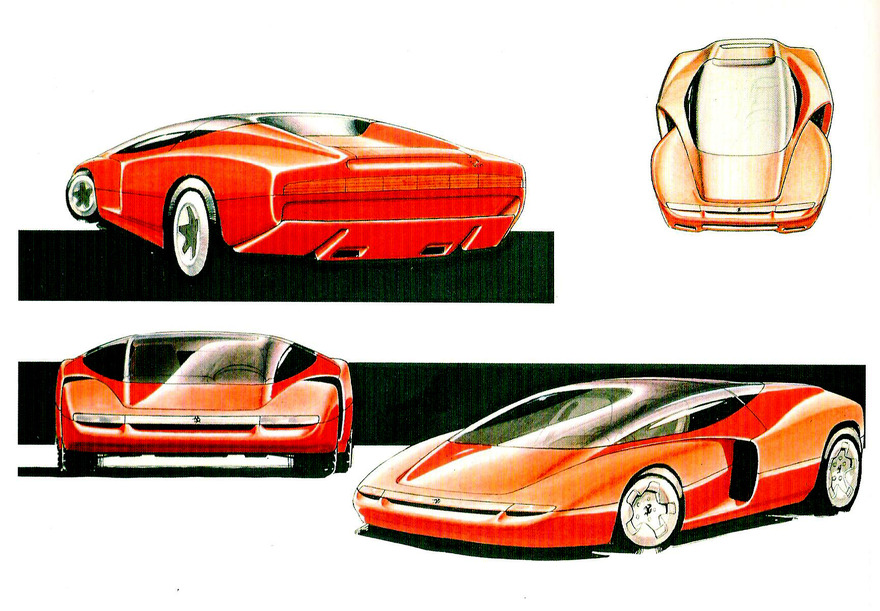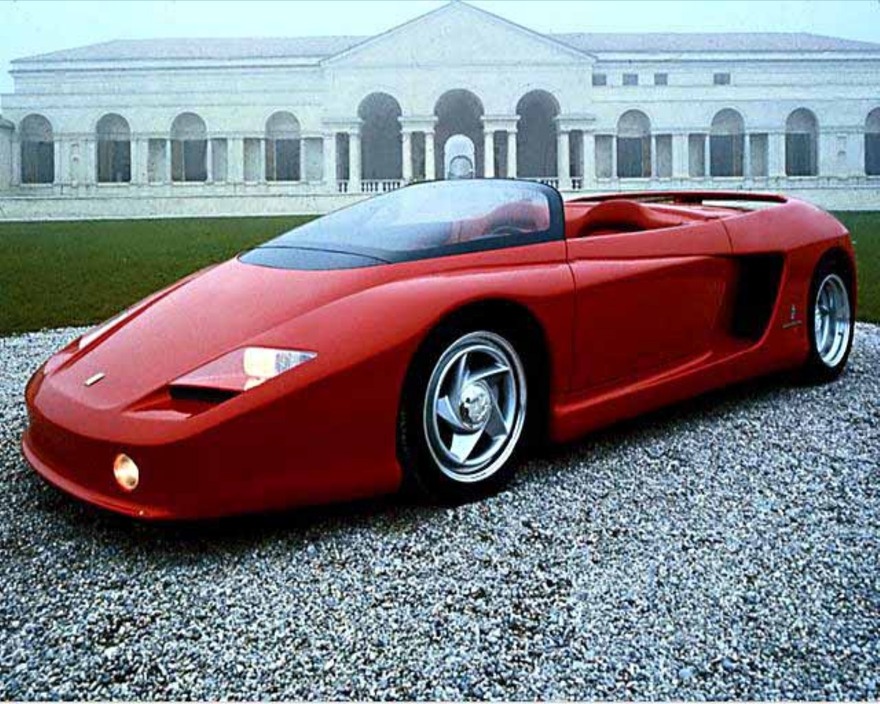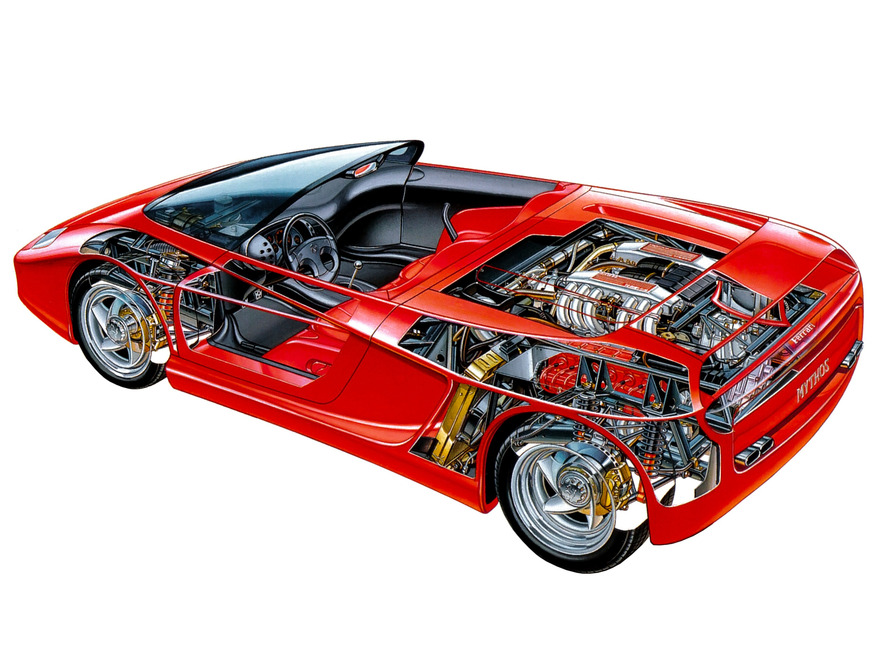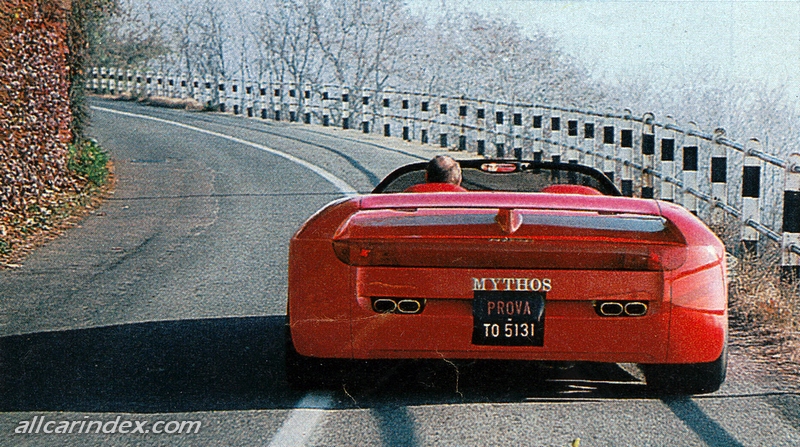Not that long ago, in 1989, the visitors at the Tokyo Motor Show were charmed by an incredibly stylish Ferrari prototype, revealed for the first time. It was designed by Pininfarina and called the Mythos.
WHAT IS PININFARINA?
Carozzeria Pininfarina S.p.A. is an Italian company, which deals with automotive design and coachbuilding. It is located in Cambiano, Italy. The company was founded in 1930 by an automobile designer and engineer Battista «Pinin» Farina under the name Carrozzeria Pinin Farina (which is a combination of the founder’s name and nickname). The main company’s objective was production coachbuilding, providing many people with employment opportunities, using the latest technology and instrumentation. Within a short time, the engineer Farina was able to build a production line capable of manufacturing 7–8 cars per day.
Many foreign companies like, for instance, Nash Motor of Detroit (now the American Motors Co.), General Motors and Renault, were eager to cooperate with the unique engineering designer. However, World War II put an end to this cooperation.
After revealing several of his masterpieces in car engineering in the USA in the 1950s, the name of car designer Battista Farina became really famous — for the first time in the history of American car manufacturing companies. Many carmakers addressed Pininfarina later to develop new models for them. In 1961, after 50 years of energetic work, Pininfarina resigned the business to his son Sergio and his son-in-law Renzo Carli.
HISTORICAL BACKGROUND
Ferrari Mythos was an attempt to revive the Barchetta two-seater, which had neither the roof, nor side windows. Barchetta stands for a “small boat” in Italian. The Barchetta in its turn was based on the Testarossa, produced 5 years earlier. The Testarossa was one of the most splendid Grand Tourer cars among all marques within the last 40 years. The Testarossa made its debut in 1984 at the Lido de Paris and then later it was officially revealed at the Paris Motor Show. The car was named after one of Ferrari’s most successful racing cars — the original 1957 Ferrari 250 Testa Rossa. This car clinched quite a number of championship titles for Ferrari in the world sports car competitions from 1957 to 1962. The Testarossa demonstrated excellent performance — it was able to reach 290 km/h of top speed and sprint from 0 to 100 km/h in 5.8 seconds — that is why the street-legal version was warmly welcomed by the public.
MYTHOS — A MYTH COME TRUE
Ferrari and Pininfarina created an amazing car, which received the 1990 Car Design Award. The stunning Mythos prototype was a one-off unit not intended for mass production and further sale to a wide range of buyers.
What about the technical specs of the engineering feat of the late 1980s? The central point of the joint project of Ferrari and Pininfarina is a large and powerful engine mounted in front of the rear axle, and rear lateral intakes. The Mythos features a more distinct gradual widening towards the rear part of the car than the Testarossa: 2-seater 2-door speedster has an exceptionally wide track — 1.518 m in the front and 1.728 m in the rear. Its tapered body is emphasised by a low front part with a prominent overhang and a wide steeply raked windshield.
Coupé, targa, and speedster bodies were considered; however, the latter won due to a better road grip. The most difficult thing was to meld together the front part of the car (nose and cockpit) with the rear section, which carried the main technical units. Viewed from the top, one can see a delta-shaped body (said to be similar to a violin), which is 2.11 m wide in its widest part and 4.305 m long. Viewed from the side, its most eye-catching feature is an extremely low sloping nose and an almost straight bodyline running towards the rear part of the car. Lateral air intakes, wheel arches and alloy wheels covered with Pirelli PZero tyres added even more harmony to the junction between the front and rear sections. Custom-made five spoke wheels are quite different from those used in previous Ferrari Grand Tourers: all screws are hidden and one can see just a prancing horse logo in the middle of the wheel.
Top horsepower delivered by a 5.0-litre boxer engine with 12 horizontally opposed cylinders borrowed from the Testarossa was 390 hp at 6,300 rpm. The engine featured a double overhead camshaft layout and a Bosch K-Jetronic injector. Sophisticated ribbed air intakes located on each side of the car fed air into the engine. Smooth five-speed transmission, great braking system comprising front and rear ventilated disk brakes, independent suspension all around — all these details made the joint masterpiece of Ferrari and Pininfarina decidedly sporty.
Mythos’s body, including the bonnet, doors, and body panels, was made of composite materials. That is why the car is fairly lightweight in spite of its impressive size — it weighs just 1,252 kg. One of Mythos’s distinct features is absence of any ornamentation, round fog lamps, several thin aerodynamic panels, headlamps sunk into the body. Designers went without the Testarossa-style radiator grille, which could block the airflow, and that is why the Pininfarina signature and Ferrari crest sit ahead of the back wheel. The tubular steel frame was borrowed from the Testarossa and reinforced. Mythos’s exhaust system was revised due to shorter rear overhang. There is almost no rear overhang actually, while two pairs of exhaust pipes peek out from the engine-ventilation slit in the back panel above the continuous bumper.
As it was right and proper for a sports car at that time, Mythos featured a rear-wheel drive layout and a low ride height of 95 mm. The speedster is capable of 290 km/h of top speed. It accelerates from 0 to 100 km/h in 6.2 seconds. The engine is powered by petrol; fuel tank capacity is 90L.
Mythos’s aerodynamics and streamlining were thoroughly tested. In order not to upset the car’s balance, Pininfarina opted for one correction technique at each end. These elements are activated automatically at the speed over 100 km/h. The rear wing spoiler can raise 30 cm and rotate 12 degrees. At the speed of 250 km/h, the spoiler provides a downforce of 150 kg. In the front, the retractable panel under the bumper moves 3 cm forward to increase the downforce reaction of the dam.
Overall, Mythos looks explicitly aggressive. The shape of the front part, a small windshield and a squared-off rear part of the car remind of certain Group C racing cars. Add to that the steeply inclined outer edges of the air intakes and the raised front wheel arches.
Distinct sports style is evident when looking at the humble cockpit equipment. The Pininfarina Mythos is a true work of art. On the inside, bucket seats and instrumental panel are reminiscent of the glorious times of sports cars and prototypes of the 1960s. Instrumental and door panels, seats and seat belts match the bodyshell both in shape and colour (red leather). The panel, steering wheel, and pedals form a single depth-adjustable block. All the necessary controls and buttons are located on two symmetrical stalks on both sides of the instrument panel. Design of the doors refer to the 1960 Barchetta racers and serve as the manifestation of minimalism — door shells can be used as armrests due to the lack of window handles. The wiper is hidden within the extended windshield.
What concerns the price of the Ferrari Mythos, it’s not that high if you search for it on the Internet — starting at €25. Unfortunately, it’s just a 1/24 scale plastic assembly kit…
INTERESTING TO KNOW:
1989 Ferrari Mythos prototype is stored at the Pininfarina style centre in Cambiano, Italy. Even though this car was not meant to be a production vehicle, it is known that there are two more units custom-built for a fancy price. However, unlike the concept car, these two units are fitted for road use and equipped with a folding top. The owner of these extraordinary cars is the current Sultan of Brunei, Hassanal Bolkiah, one of the planet’s wealthiest people and a passionate car collector.
The 1989 Ferrari Mythos is called Enzo Ferrari’s swan song and his “last will”: the work on this concept model started under his supervision, however, it was revealed to the public only after his death. Mythos became a path-breaking prototype, which told the world about the change of basic approach in car manufacturing and design, about the abandonment of realistic models in favour of a dream. When looking at the Ferrari Mythos Pininfarina, one can definitely say that dreams do come true.













